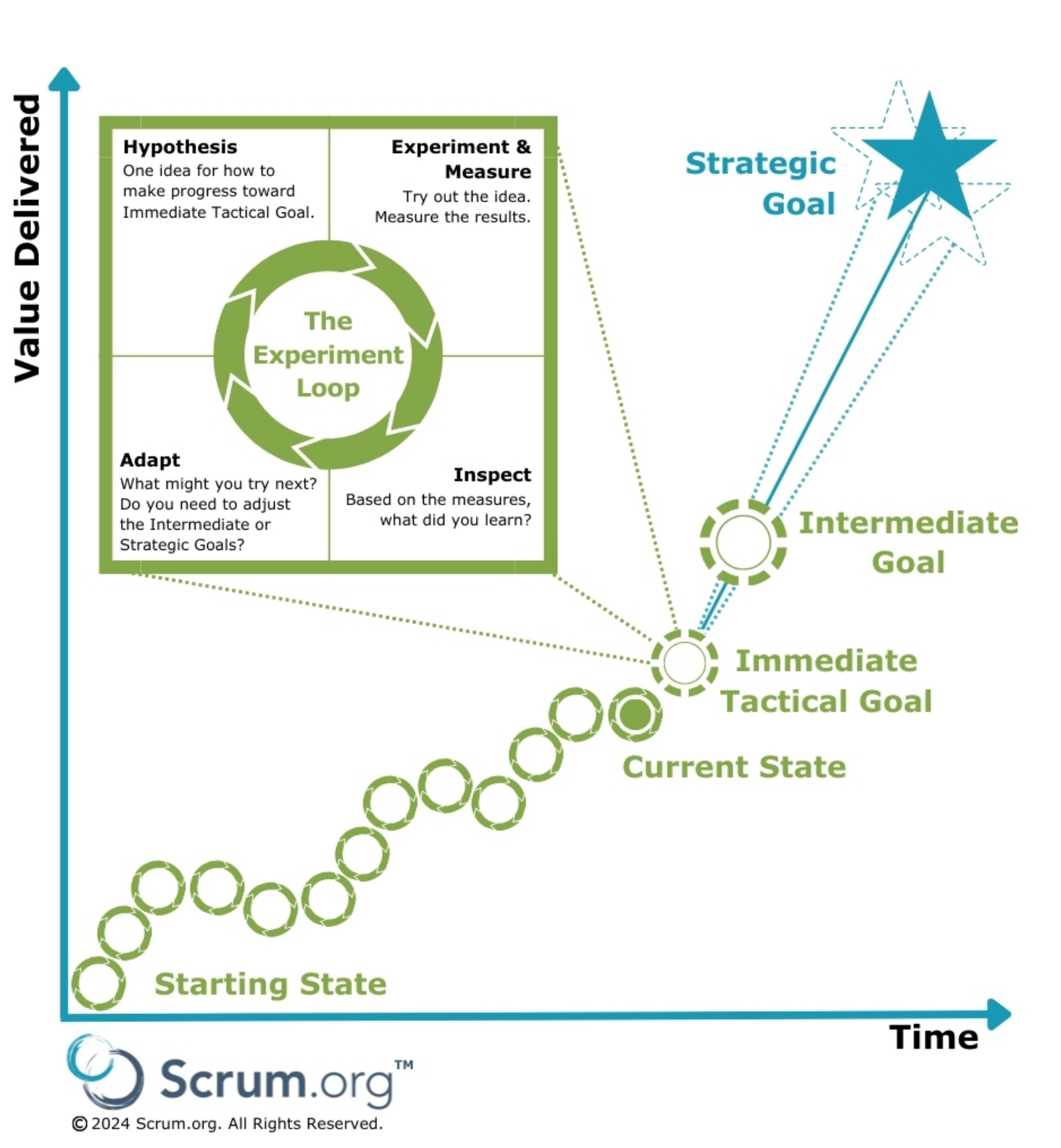Evidence-based management

Goals on different timescales
In EBM an organisation drops measuring activty and internal output and creates value by focusing on customer outcome and customer satisfaction.

When the path is unknown, EBM provides a way towards a team's and organisation's goals by leveraging and expressing the uniqueness of an organisation to create purpose and alignment about what it does, including:
- Vision: The change the organisation wants to make in the world
- Mission: Why the organisation is uniquely qualified to achieve the vision statement
- Goals: Mapped out on different timescales and levels to help the organisation achieve its mission and vision
Vision and mission statements provide compelling purpose in a market of uncertainty, whereas goals provide focus to make concrete progress towards these. Through employing EBM organisations become enabled to form effective long-term, intermediate-term and short-term goals by employing experiments in a reflective practice and evidence-based way.
Employing EBM in your organisation indicates a change of structure to short feedback cycles. If your organisation or freelance business is focused on internal output or activity measures such as how large your key accounts are, you are missing on how to create value by focusing on customer outcome and customer satisfaction.
Creating your goals along customer outcomes and satisfaction gaps and how to measure these goals will help you to obtain the customer feedback and establish fast feedback loops to guide future decisions.
Long-term startegic goals are often too ambitious, but near-term intermediate goals will guide your decisions to improve organsiation effectiveness to increase your ability to deliver value.
Short-Term, immediate, tactical goals establish realistic goals for your enterprise to help customers and improve their experiences. The empirical approach will help your business to measure outcomes against formed hypotheses and help your organisation to get better over time, change your goals and eventually reach your longer-term strategic goals.
Measuring Value with KVAs
Four Key Value Areas to guide Improvement
- Current Value - Quantification of value delivered today
- Unrealised Value - Quantification of potential future value that could be realised if the organisation met the needs of all potential customers
- Ability to Innovate - Quantification of effectiveness of your business to deliver new capabilities
- Time To Market - Quantification of how quickly your organisation can deliver and learn from feedback gathered from experiments.
The four KVAs help your organisation to move into the right direction by helping you to understand if there are improvements as a direct result of the experiments.

The four Key Value Areas in Evidence Based Management would help your business to understand your current and future capabilities to deliver value and make informed and evidence-based decisions for learning and continous improvement.
Establishing a culture of continous improvement would significantly enhance your organsiation's competitive advantage.
Introducing Agile ways of working into your organisation would only work if you establish a culture of iterative development, continous delivery and test-driven thinking throughout your organisation to enable it to absorb the innovations coming from multiple agile teams.
Inspect and Adapt off information gathered by experimental real-world tests, results and measures is key to understanding your organisation's delivery capabilities and practices. This and establishing a culture of continous improvements would drive your organisation's ability to innovate by making informed and evidence-based decisions.
Thank you for reading. You can download the official EBM guide from here.